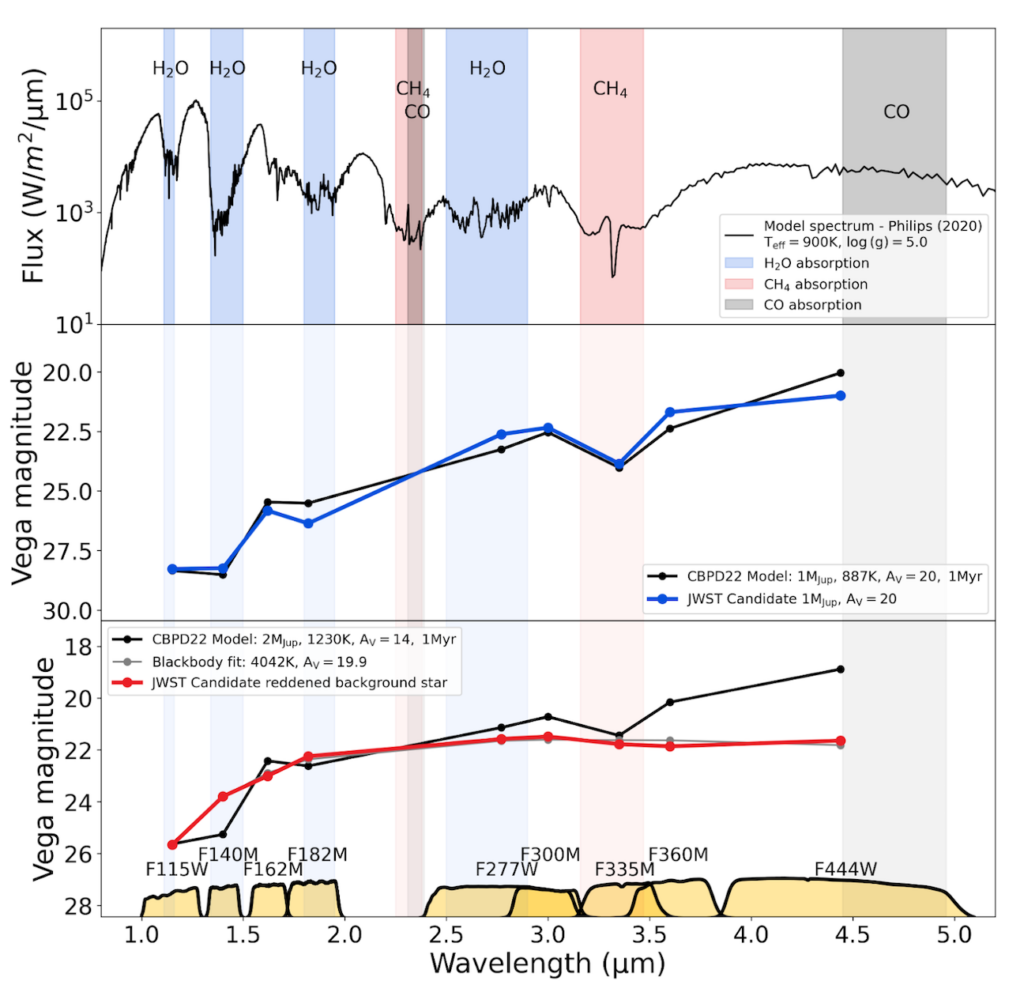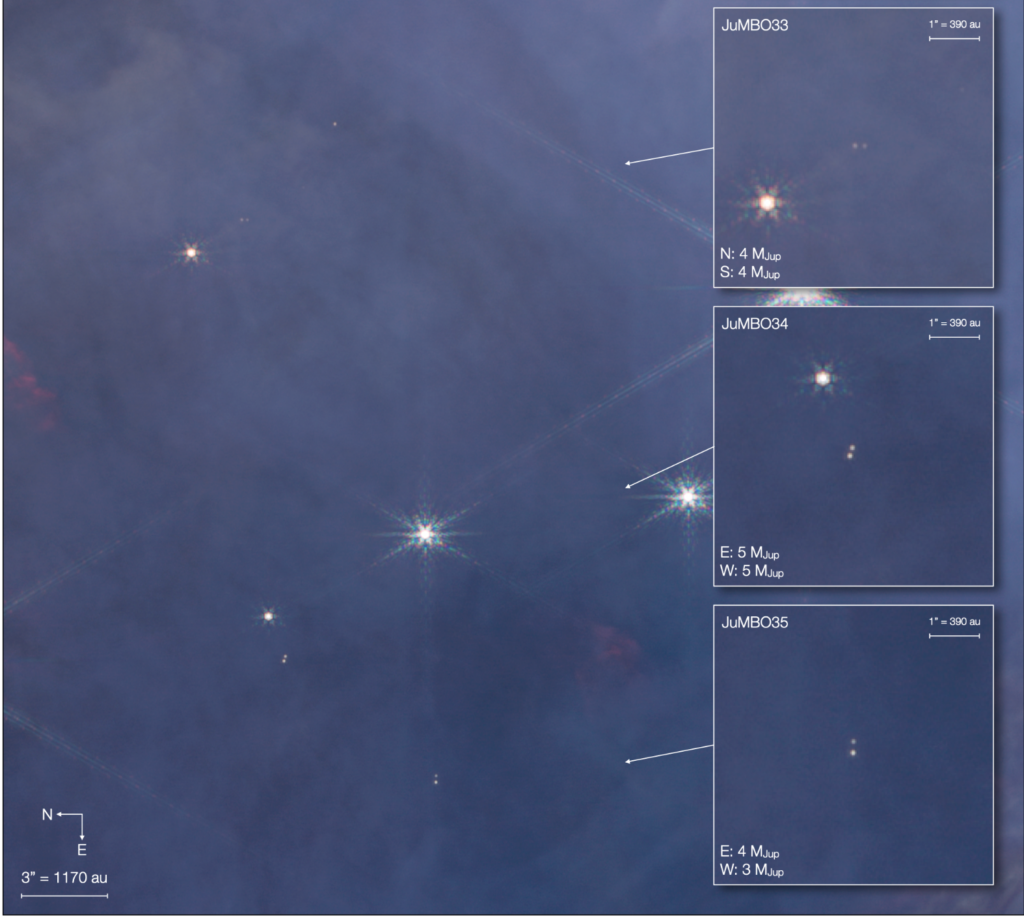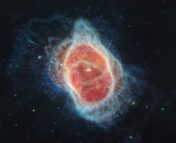Title: Jupiter Mass Binary Objects in the Trapezium Cluster
Authors: Samuel G. Pearson and Mark J. McCaughrean
First Author’s Institution: European Space Research and Technology Center, European Space Agency, Zuid Holland, The Netherlands
Status: Preprint available on arXiv
The heart of the Orion Nebula, our galaxy’s most iconic star-forming region, is home to thousands of wannabe stars. But not all of these hopefuls will get their big break.
In order to ignite hydrogen fusion and reach the main sequence, stars must exceed the hydrogen-burning limit of 0.075 solar masses. Anything smaller is doomed to become a substellar object, a category that includes both brown dwarfs (13 to 80 times the mass of Jupiter, MJup) and planetary mass objects (PMOs; less than 13 MJup). Studying these objects can help us constrain the initial mass function (IMF), so we want to find as many of them as we can. Unfortunately, the features that make these objects interesting also make them extremely difficult to detect.
Aside from a brief period of deuterium fusion in brown dwarfs, substellar objects don’t produce energy internally like stars do. Instead, they cool and grow fainter with age, emitting most of their energy at infrared wavelengths. Astronomers get around this by looking for substellar objects when they’re young and bright, making star-forming regions like Orion the ideal place to search. But even though previous studies have identified a handful of young PMOs in the Trapezium Cluster, they couldn’t probe masses below 3-5 MJup; smaller sources were too faint, and the background of the Orion Nebula was too bright. Luckily, astronomers recently got their hands on a shiny new infrared space telescope capable of solving both of these problems: JWST!
In today’s paper, the authors use JWST’s Near Infrared Camera (NIRCam) to conduct a new search for PMOs in the Trapezium Cluster. They take images in 12 infrared filters in order to construct a spectral energy distribution (SED), a plot of filter wavelength versus the energy measured in that filter, for each of the sources in their images. As shown in Figure 1, the SED of a PMO looks significantly different from the SED of a blackbody source due to strong molecular absorption features in the atmosphere of the PMO. Based on this, the authors fit SED models of PMOs, brown dwarfs, and low mass stars to the real SEDs of each of their sources, taking the parameters of the best-fit model as the parameters of the source.

With this method, the authors identified 540 PMO candidates with best-fit masses of 13 MJup or lower, a huge improvement over the handful of PMOs known before. They also made a shocking discovery: about 9% of the PMO candidates are in binary or triple systems! These systems, which the authors dubbed JuMBOs (for Jupiter Mass Binary Objects), are clearly visible in the NIRCam images (see Figure 2).
But how do we know that JuMBOs are real binary systems rather than chance alignments? Imagine two sources at very different distances from Earth. Our images of the sky contain no distance information; instead, the position of each source is reduced to a 2D coordinate (often right ascension and declination). If our two sources have similar 2D coordinates, they will appear close together in our images even though they are far apart in 3D space, creating a false visual binary. Could this effect explain the JuMBO population?
To address this, the authors estimate the expected number of chance alignments for their PMOs and find that it is much lower than the number of JuMBOs observed. They also rule out chance alignments with foreground brown dwarfs, estimating that only ~2 such objects are expected to appear across their entire image. The majority of the JuMBOs therefore appear to be real, never-before-seen binary systems.

The existence of JuMBOs is difficult to explain under our current understanding of planet formation. Planets are thought to form from the slow aggregation of material in debris disks around young stars. Sometimes, instabilities during this process result in the ejection of a planet from its solar system, creating a free-floating PMO like those observed in the Trapezium Cluster. But these free-floating PMOs were always assumed (and observed!) to be isolated objects. It is not clear how two or more PMOs could become gravitationally bound. Either they formed that way to begin with—which the protoplanetary disk model doesn’t allow—or they were simultaneously ejected while remaining bound, which seems unlikely.
JuMBOs also challenge our understanding of binary systems. The fraction of stars in binaries has been measured to decrease with mass across multiple orders of magnitude, from ~80% for massive stars to nearly 0% for the smallest stars. If 9% of PMOs are in binary systems, this trend would be reversed at the lowest masses (see Figure 3). Current theories of star and planet formation cannot easily explain this reversal, leading the authors to suggest that unknown formation mechanisms (such as “fragmentation of a star-less disk”) might be at play.

The discovery of JuMBOs has exciting implications, but we clearly have a lot more work to do if we want to understand their origins. Luckily, the authors of today’s paper already have follow-up spectroscopy planned for JWST Cycle 2. By combining this additional observational data with simulations of possible JuMBO formation scenarios, we will hopefully be able to learn more about how these strange objects fit into – or challenge! – our current theories of star and planet formation.
Astrobite edited by Catherine Slaughter.
Featured image credit: ESO/IDA/Danish 1.5 m/R.Gendler, J.-E. Ovaldsen, and A. Hornstrup




